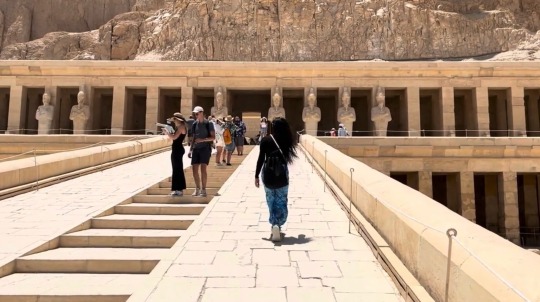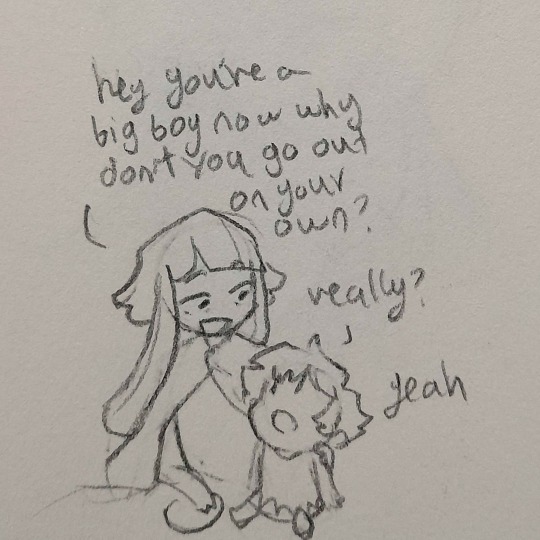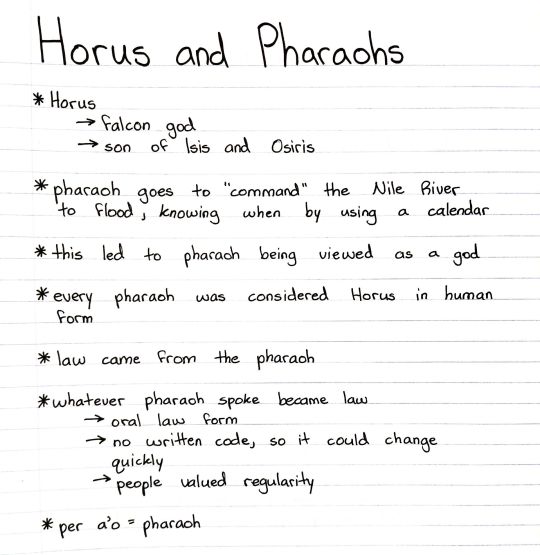#nile river ancient egypt
Explore tagged Tumblr posts
Text
What is the name of the longest river in Africa?
What is the name of the longest river in Africa? A. Congo River B. Nile River C. Zambezi River D. Niger River Continue reading Untitled
View On WordPress
#africa&039;s longest river#africa&039;s third longest river#how long is the nile river#largest river in africa#largest river in africa continent#longest river in africa 2021#longest river in africa crossword#longest river in america#longest river in south africa#longest rivers in africa in order#longest rivers in africa list#nile river ancient egypt#nile river cruise#nile river cruises 2022#nile river cruises 2023#nile river definition#nile river delta#nile river egypt#nile river facts#nile river length#nile river location#nile river map#nile river valley#nile river valley civilization#second longest river in africa#what is the longest river in africa#where is the nile river#where is the nile river located#which river is the longest in africa
0 notes
Text

Reclining on the banks of the Nile | AI-assisted art by @eincline
#ai generated#ai art#ancient world#men#men in love#male form#ancient egypt#nile river#Egypt#homoerotic#homoerotism
250 notes
·
View notes
Text
Beautiful Egyptian Faience Hippopotamus (2040-1638 BC)

Middle Kingdom, Ancient Egypt
This statuette of a hippopotamus (popularly called "William") was molded in faience, a ceramic material made of ground quartz.
A glass-like material associated with rebirth, Egyptian faience was often used to make grave goods, such as this hippo.
Hippos were associated with the Nile River, considered the source of all life.
Beneath the blue glaze, the body was painted with lotuses.
These river plants depict the marshes in which the animal lived, but at the same time, their flowers also symbolize regeneration and rebirth as they close every night and open again in the morning.
The plant motifs painted on the figurine were to symbolize the animal in its natural environment.
Blue is the color of the waters of the Nile.
The bright blue color of this hippo seemingly contrasts with the naturalistic modeling of its face and ears.
By using blue glaze and covering the hippo's body with images of plant and animal life, the artist represented the animal in its habitat and evoked both the Nile River and the primeval waters of the god Nu, suggesting themes of life and rebirth.
The seemingly benign appearance that this figurine presents is deceptive.
To the ancient Egyptians, the hippopotamus was one of the most dangerous animals in their world.
The huge creatures were a hazard for small fishing boats and other rivercraft.
The beast might also be encountered on the waterways in the journey to the afterlife.
As such, the hippopotamus was a force of nature that needed to be propitiated and controlled, both in this life and the next.
Egyptians' wish for life after death may account for the inclusion of hippo statuettes in tombs of officials during the Middle Kingdom.
The placement of hippo figures in tombs, sometimes in direct contact with the mummy, required that the animal's dangerous aspects be negated so that the deceased would not be physically harmed.
This example was one of a pair found in a shaft associated with the tomb chapel of the steward Senbi II at Meir, an Upper Egyptian site about 30 miles south of modern Asyut.
Three of its legs have been restored because they were probably purposely broken to prevent the creature from harming the deceased.
The hippo was part of Senbi's burial equipment, which included a canopic box, a coffin, and numerous models of boats and food production.
The hippo's modern nickname first appeared in 1931 in a story that was published in the British humor magazine Punch.
It reports about a family that consults a color print of the Met’s hippo, which it calls "William," as an oracle.
The Met republished the story the same year in the museum’s Bulletin, and the name William caught on.
(7.8 x 5.2 x 20.3cm)
📍: MET Museum
#hippopotamus#statuette#faience#quartz#rebirth#Egyptian faience#ancient egypt#ancient civilizations#nile river#blue#lotus#flower#regeneration#Nu#death#after life#tomb#hippo figures#Senbi II#Meir#ceramic material#burial#Punch#William#MET Museum#moo deng
8 notes
·
View notes
Text

All hail Sobek, the chaotic and powerful bringer of life!
𓆋
#history#sobek#mythology#faiyum#crocodile#ancient egyptian history#kemetic#old kingdom#middle kingdom#new kingdom#creation myth#ancient history#ancient egyptians#nile river#egyptian mythology#crocodilopolis#ancient egypt#myths#kemetism#ancient#egyptology#fertility#ancient egyptian mythology#pharoah#nickys facts
8 notes
·
View notes
Text
youtube
Cairo, 1852
#cairo#egyptian pyramids#egyptology#egyptian#ancient egypt#gods of egypt#egypt#ancient city#ancient ruins#pyramids of giza#great pyramid of giza#giza#cleo de nile#nile#the nile#nile river#the mummy#the mummy returns#desert#dune#Youtube
7 notes
·
View notes
Text

Anubis & Bastet.
New anthropomorphic themed illustrations based on my interest of the relationship between felines and canines (cats and dogs).
In Ancient Egypt, the Egyptian people about two-thousand years ago had gods and goddesses with animal formalities based on their so called symbolism and emulation such as strength, protection, and nurturing.
Anubis: god of funerals and guardian of the dead whose head is of a jackal.
Bastet: goddess of cats, protection and pleasure. Servant for the Sun God, Ra.
Here in this illustration is based on the so-called rumour of the relationship between Anubis and Bastet. So here in my imagination, the people of Ancient Egypt (year 113 B.C) under Queen Cleopatra III was under pressure between the rivalry the dog people and cat people.
A reference to William Shakespeare's Romero & Juliet, here we see Anubis and Bastet whose families hate each other but the these two lovebirds had something special in them. They put aside their differences and fell in love as they look into each other's eyes. To avoid a war between their species and bring danger to the human Egyptians, they reveal how they meant for each other and once they see it, Ra will continue bring light throughout the land of Egypt including the waters of the river Nile.
#illustration#anthropomorphic#ancient egypt#god anubis#bastet#river nile#pryamids#sphinx#sahara desert#egyptian pyramids#dog and cat#romance#ankh#egypt#jackal#cat goddess#pharoah#2024#history#myth#anthromorphism#adobe illustrator#creative minds#my art#art direction
6 notes
·
View notes
Text
It's impossible to overstate the importance of the Nile for ancient and modern Egypt. It's interesting to learn how it has shifted over time, and not just in the Delta.
18 notes
·
View notes
Text

Once upon a time when Woman leader emerged…year BCE 1473 https://youtu.be/cTfGO8ki1oU?si=4pg21Xg7l2IshRBR #Egypt #thebes #upperegypt #luxor #travel #ancientegypt #woman #leader #power #hatshepsuttemple #history #underworld #pharaoh #middleeast #sphinxegypt #statue #tombs #desert #nileriver #thisisegypt #traveler #explore #world #egipto #mısır #luksor
youtube
10 notes
·
View notes
Text
A Thought on the Nile and its Ancient Origins

By Jean-Léon Gérôme - Fuente, Public Domain, https://commons.wikimedia.org/w/index.php?curid=75309705
The Nile formed the center of the ancient kingdom of Egypt, keeping the area near it lush and allowing ancient civilization to grow up and prosper around it, as many other rivers did, but by not being caught between other rivers, by being surrounded by the Sahara, it allowed ancient Egyptian civilization to prosper for a very long time, leading to a very deep history and a huge material culture to remain behind. Napoleon bringing not only an army but also artists and archaeologists to Egypt in the 1790s opened up a lot of history to the people of Europe that had only been known through the lens of ancient Greek historians. Couple with the Romantic movement that focused on the subjective, appreciation of nature, imagination, and intuition all being important in the understanding in the world led to a focus on the ancient world and a longing to return to the 'simpler' times in the past.

source: https://digitalcollections.nypl.org/items/510d47e0-2197-a3d9-e040-e00a18064a99
In that world view, James Henry Leigh Hunt, usually known as Leigh Hunt, and his 'Hunt Circle', which included other writers such as Percy Bysshe Shelley, John Keats, and other greats of the era, created their works. From the reports, illustrations, and artifacts, they recreated the past in their minds and their poetry. He published A Thought of the Nile without ever having seen it himself. Instead, he relied on those who came before him to describe what they saw in Egypt. He described the way the Nile flows through Egypt and its sands, calling it 'some grave mighty thought threading a dream', not quite real, though the sands are eternal. He even referenced Sesostris, who was a legendary king written about by Herodotus, likely a conglomeration of four pharaohs, and set him against the 'laughing queen' of the river. In the second stanza of the poem, the dream is dispelled and the Nile is still there, causing him to remember to 'think how we shall take/Our own calm journey on for human sake.', bringing himself and the reader out of the poem and the world of the Nile with a reminder to keep that calmness.
You can read the whole poem here.
3 notes
·
View notes
Text


Shout out ancient Greek and Egyptian lactating male breasts(?). Ummmmm uhhhhh welllll yes!
(From the Poets of Alexandria by Susan A. Stephens)
#argonautica#jason and the argonauts#apollonius#ancient greece#classics#Euphemus#ancient greek literature#library of alexandria#callimachus#ancient egypt#nile river
4 notes
·
View notes
Text










I can't think of a joke to make just mama son moment
Prev / Next
#this is bot in colour but egys cape thingy is blue#this is notable cause the cape is actually a representation of the nile river#what does egy passing down the nile to baby egy mean? idk I'm not good with metaphors#hetalia#aph#hws#aph egypt#hws egypt#aph ancient egypt#hws ancient egypt#egytalia#blue's doodles
18 notes
·
View notes
Text
Egypt... the best of the River Nile
Egypt, a land of ancient wonders and modern marvels, beckons travellers with its rich tapestry of history, culture, and natural beauty. #Egypt #RiverNile #Tutankhamun #AncientHistory #History #Luxor #Aswan #RaII #Nile #Cruise #ValleyoftheKings #KingTut
Egypt Egypt, a land of ancient wonders and modern marvels, beckons travellers with its rich tapestry of history, culture, and natural beauty. Among its many jewels, Luxor and Aswan stand out as iconic destinations, offering a glimpse into the grandeur of bygone eras. These cities, situated along the life-giving River Nile, form the heart of many Nile cruises, tracing a route that has been…
#Abu Simbel#adventure#Ancient Egypt#Aswan#blog#complete#Cruise#Edfu#Egypt;#Esna#Karnak#Kom Ombo#Luxor#Luxor Museum#Nile#Nile Cruise#Pharaohs#Ra#RA II#River Cruise#River Nile#Temple#Temple of Karnak#Temple of Khnum#Temple of Queen Hatshepsut#Temple of Sobek#The Ra#travel#travelblog#Tutankhamun
2 notes
·
View notes
Text
Antinoi Mors (Lat. Death of Antinous).


Antinoi Mors (Lat. Death of Antinous)
Personal illustration
Here is he, the tragic Greek favourite of the Roman Emperor Hadrian, drowned under mysterious circumstances in the river Nile. Floating among the sacred fragrant lotus flowers in the nocturnal river, a lifeless body starts to gleam - a golden halo and rays of Divine light shine announcing the apotheosis of a new, double, Greco-Roman and Egyptian divinity.
#illustration#antinous#ancient rome#ancient history#ancient greece#ancient egypt#emperor hadrian#apotheosis#river nile
4 notes
·
View notes
Text
Horus and Pharaohs

Patreon
#studyblr#notes#history#history notes#historyblr#world history#world history notes#western civ#western civ notes#western civilization#western civilization notes#western civ 1#western civ 1 notes#western civ I#western civ I notes#horus#pharaohs#ancient egypt#egyptian pharaohs#per a'o#ancient egyptian religion#ancient egyptian mythology#nile river#osiris
4 notes
·
View notes
Text

(CNN) — Egypt’s Great Pyramid and other ancient monuments at Giza exist on an isolated strip of land at the edge of the Sahara Desert.
The inhospitable location has long puzzled archaeologists, some of whom had found evidence that the Nile River once flowed near these pyramids in some capacity, facilitating the landmarks’ construction starting 4,700 years ago.
Using satellite imaging and analysis of cores of sediment, a new study published Thursday in the journal Communications Earth & Environment has mapped a 64-kilometer (40-mile) long, dried-up branch of the Nile, long buried beneath farmland and desert.
“Even though many efforts to reconstruct the early Nile waterways have been conducted, they have largely been confined to soil sample collections from small sites, which has led to the mapping of only fragmented sections of the ancient Nile channel systems,” said lead study author Eman Ghoneim, a professor and director of the Space and Drone Remote Sensing Lab at the University of North Carolina Wilmington’s Department of Earth and Ocean Sciences.
“This is the first study to provide the first map of the long-lost ancient branch of the Nile River.”

Ghoneim and her colleagues refer to this extinct branch of the Nile river as Ahramat, which is Arabic for pyramids.
The ancient waterway would have been about 0.5 kilometers wide (about one-third of a mile) with a depth of at least 25 meters (82 feet) — similar to the contemporary Nile, Ghoneim said.
“The large size and extended length of the Ahramat Branch and its proximity to the 31 pyramids in the study area strongly suggests a functional waterway of great importance,” Ghoneim said.
She said the river would have played a key role in ancient Egyptians’ transportation of the enormous amount of building materials and laborers needed for the pyramids’ construction.
“Also, our research shows that many of the pyramids in the study area have (a) causeway, a ceremonial raised walkway, that runs perpendicular to the course of the Ahramat Branch and terminates directly on its riverbank.”
Hidden traces of a lost waterway

Traces of the river aren’t visible in aerial photos or in imagery from optical satellites, Ghoneim said.
In fact, she only spotted something unexpected while studying radar satellite data of the wider area for ancient rivers and lakes that might reveal a new source of groundwater.
“I am a geomorphologist, a paleohydrologist looking into landforms. I have this kind of trained eye,” she said.
“While working with this data, I noticed this really obvious branch or a kind of riverbank, and it didn’t make any sense because it is really far from the Nile,” she added.
Born and raised in Egypt, Ghoneim was familiar with the cluster of pyramids in this area and had always wondered why they were built there.
She applied to the National Science Foundation to investigate further.
Geophysical data taken at ground level with the use of ground-penetrating radar and electromagnetic tomography confirmed it was an ancient arm of the Nile.
Two long cores of earth the team extracted using drilling equipment revealed sandy sediment consistent with a river channel at a depth of about 25 meters (82 feet).
It’s possible that “countless” temples might still be buried beneath the agricultural fields and desert sands along the riverbank of the Ahramat Branch, according to the study.

Why this branch of the river dried up or disappeared is still unclear. Most likely, a period of drought and desertification swept sand into the region, silting up the river, Ghoneim said.
"The study demonstrated that when the pyramids were built, the geography and riverscapes of the Nile differed significantly from those of today," said Nick Marriner, a geographer at the French National Centre for Scientific Research in Paris.
He was not involved in the study but has conducted research on the fluvial history of Giza.
“The study completes an important part of the past landscape puzzle,” Marriner said.
“By putting together these pieces, we can gain a clearer picture of what the Nile floodplain looked like at the time of the pyramid builders and how the ancient Egyptians harnessed their environments to transport building materials for their monumental construction endeavors.”

#Egypt#Great Pyramid#Giza#Nile River#archaeology#Ancient Egypt#Communications Earth & Environment#Space and Drone Remote Sensing Lab#map#pyramids#Ahramat#ground-penetrating radar#electromagnetic tomography#Unas#Valley Temple#Great Sphinx of Giza#pyramid mystery#waterways
6 notes
·
View notes
Text
youtube
Karnak, 1845
#karnak#ancient egypt#egypt#abu simbel#pyramids of giza#great pyramid of giza#giza#nile river#cleopatra#tutankhamun#nefertiti#ramses#the prince of egypt#the mummy#the mummy returns#brendan fraser#imhotep#hamunaptra#thebes#assassins creed origins#ac origins#bayek of siwa#Youtube
2 notes
·
View notes